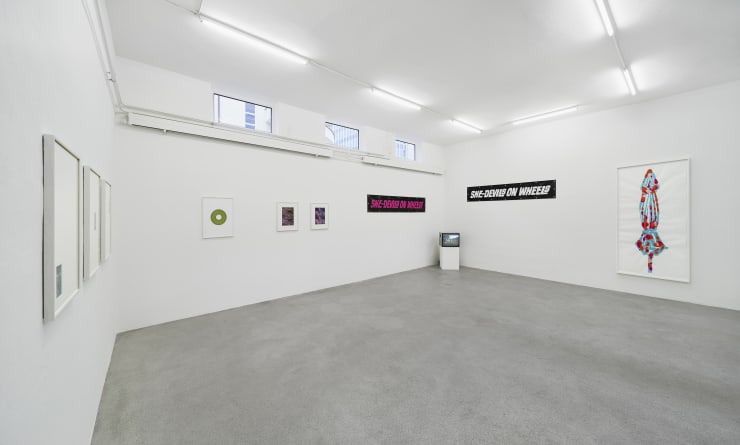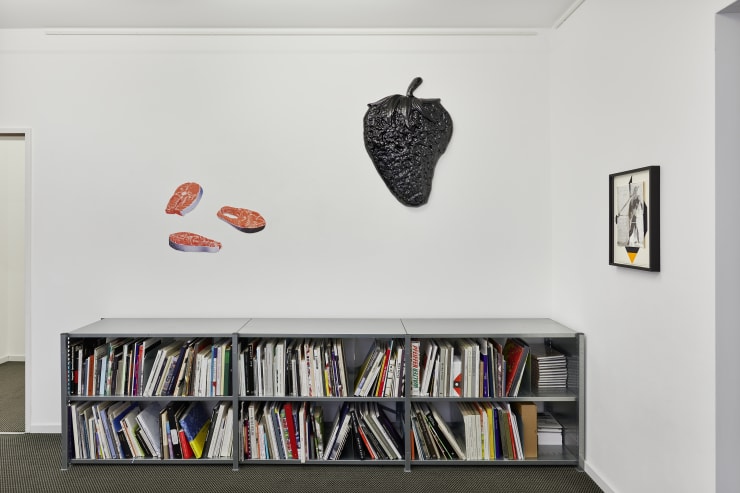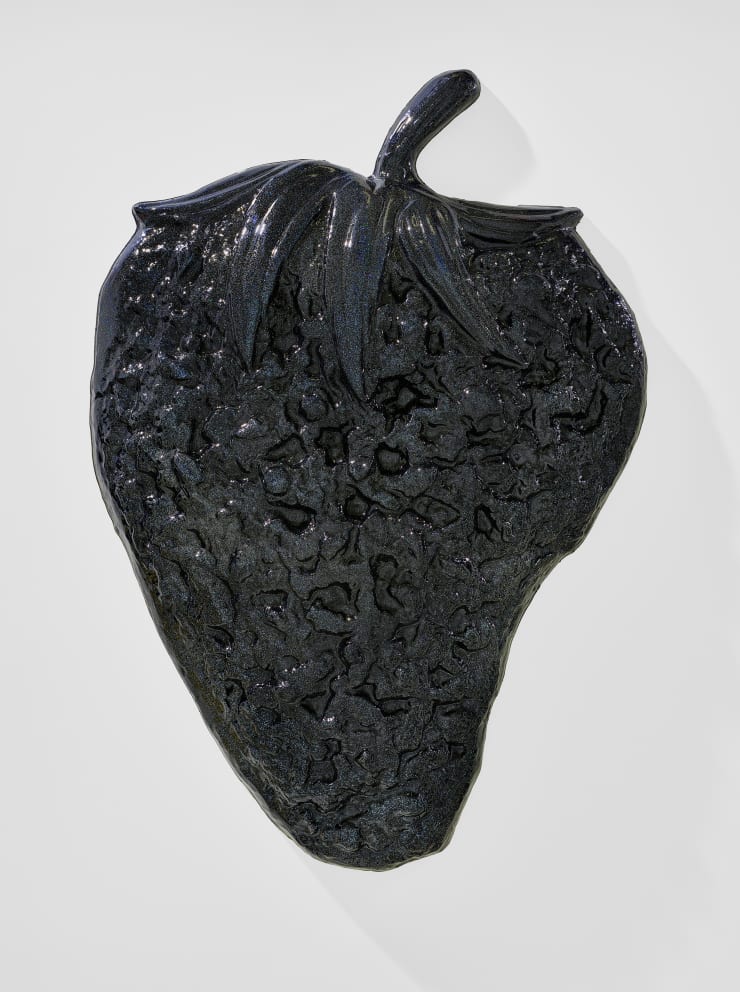Figueras
In his work, Denis Savary creates a network of meanings that spans the fields of literature, art history and industrial design through the choice of motif, colors and curves.
An oversized, thermoformed and black painted strawberry is placed on the wall like a relief, as if evoked from a dream. The object entitled Corinna - in honour of the Vaud writer Corinna Bille (1912-1979) - refers to a famous novella by the author called Black Strawberries. In addition to this reference to the French-speaking culture-defining writer - a form of reactivating her writings - Savary’s wall sculpture is also a direct allusion to art history and its symbolic potential. The black strawberry, which comes from the late harvest in November, has been an erotic symbol since the Middle Ages and is often found in the paintings of Hieronymus Bosch. In contrast, the use of thermoformed plastic refers to a commercial technique of industrial mass production. A radical printing technique that has been used since the 1960s by pop artists such as Claes Oldenburg and Richard Hamilton.
Many of Savary’s works show his tendency to reactivate stories from the world of culture, referring to the relationships on the margins of artist biographies. Whether through the almost parodic replica of Kokoschka’s doll or by the variation of Félix Vallotton’s series Intimités, Savary brings unusual stories to life. The linocut with the title Figueras refers to the city of origin of the artist Salvador Dalí. It represents a life-size parasol, which is folded like a day without sun.
The conical structure recalls Dalí’s interpretation of the bauta, a Venetian costume worn in the 18th century. century at secret meetings during the carnival in Venice was worn. On the occasion of the legendary ball of Carlos de Beistegui on 3 September 1951, also known as "Feast of the Century"In collaboration with fashion designer Pierre Cardin, the Spanish artist created a variation of this three-piece costume with a black tricorn, a mask and a veil in his theatre museum in Figueras.
Another reference to Dalí is the choice of shade of the parasols, which corresponds to the shade of the Spanish company Chupa Chups, for which Dalí designed the first logo in 1958.
Denis Savary’s artistic practice reflects his love of experimentation and his enthusiasm for working with other artists and craftsmen. Savary takes up such different techniques as video, sculpture and drawing and stages in his works specialist knowledge as well as literary and iconographic sources, which apparently have nothing in common. During the creation process, various stories are integrated into the works.
Denis Savary graduated in Fine Arts in 2004 from the École cantonale dart de Lausanne (ECAL), where he is currently a professor. His works have been shown in solo exhibitions at the Kunsthalle Bern (2012), the MAMCO in Geneva (2015) and the Musée des Beaux-Arts in La Chaux-de-Fonds (2019). He has received numerous awards, including the Swiss Art Award in 2004 and 2007, and the London Atelier Scholarship in 2018 from the Landis & Gyr Foundation.
For further information, please visit the website:
https://www.edition-vfo.ch/artist-Denis-Savary-285.html








